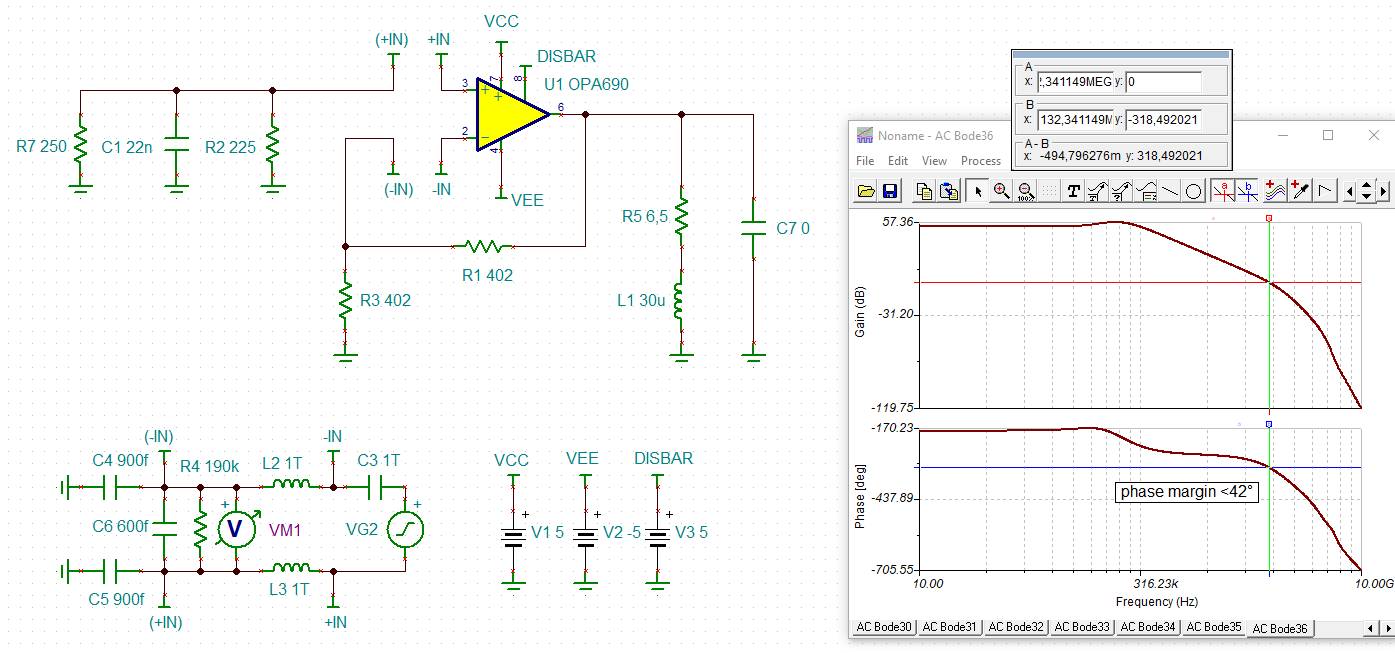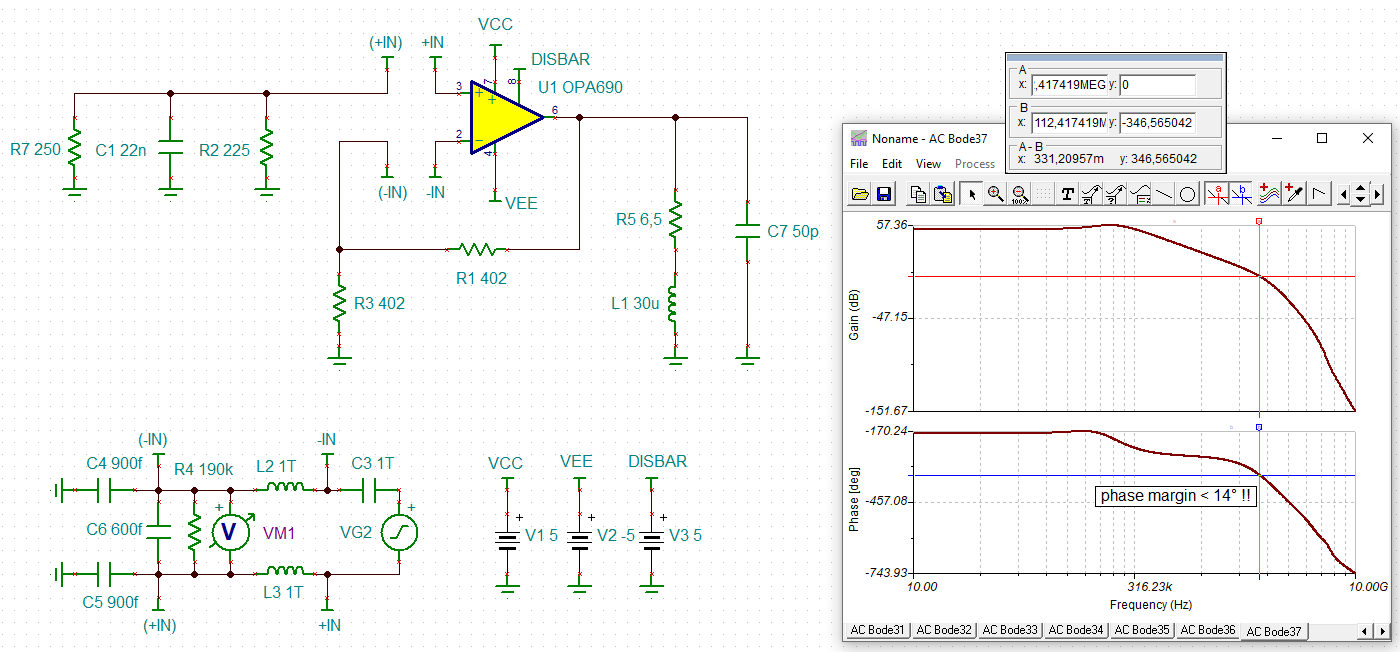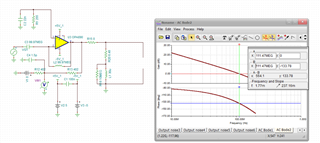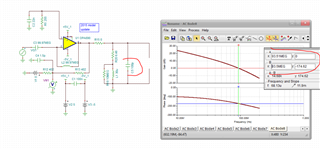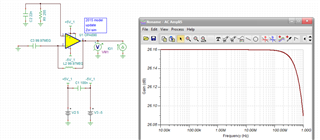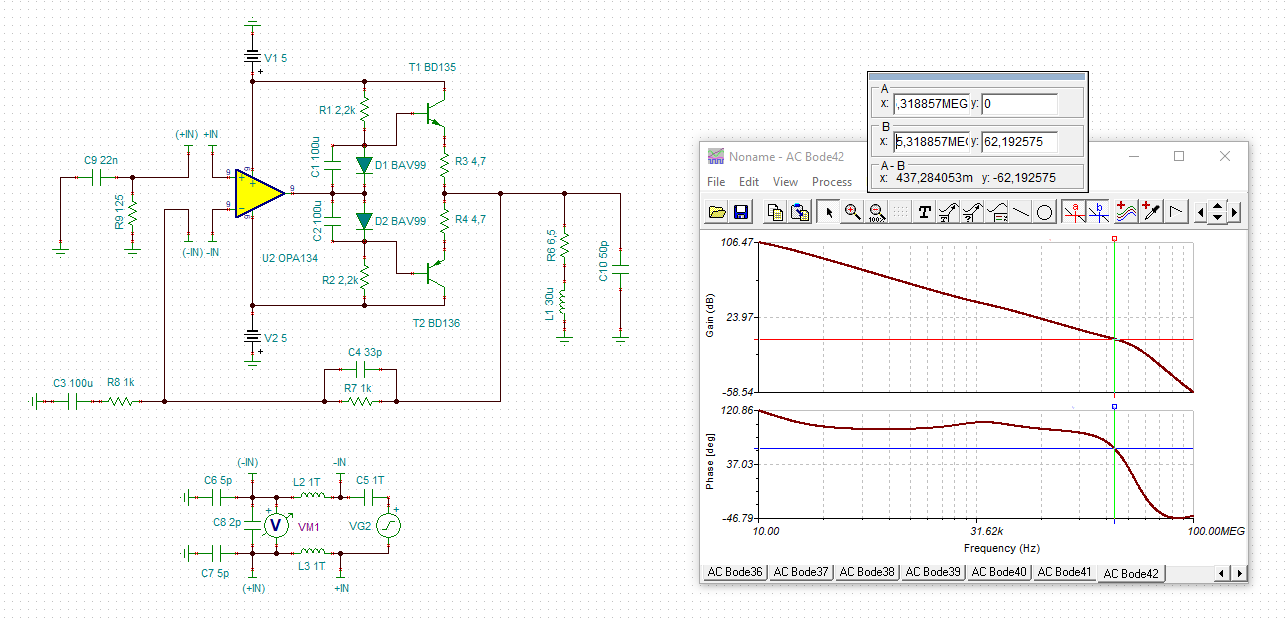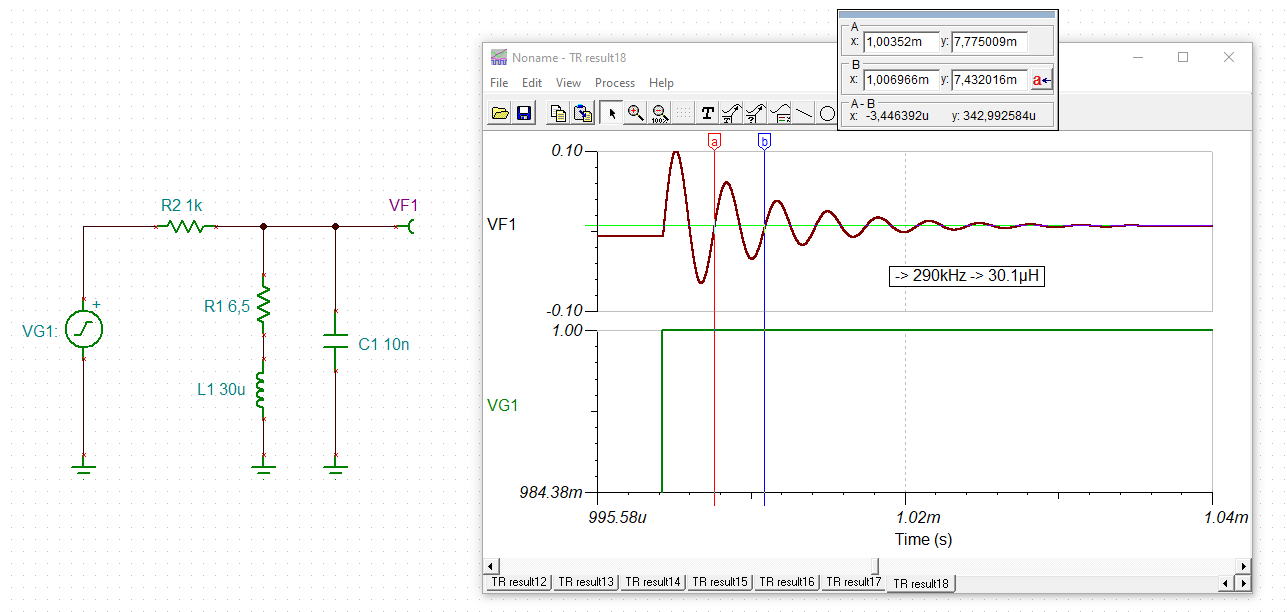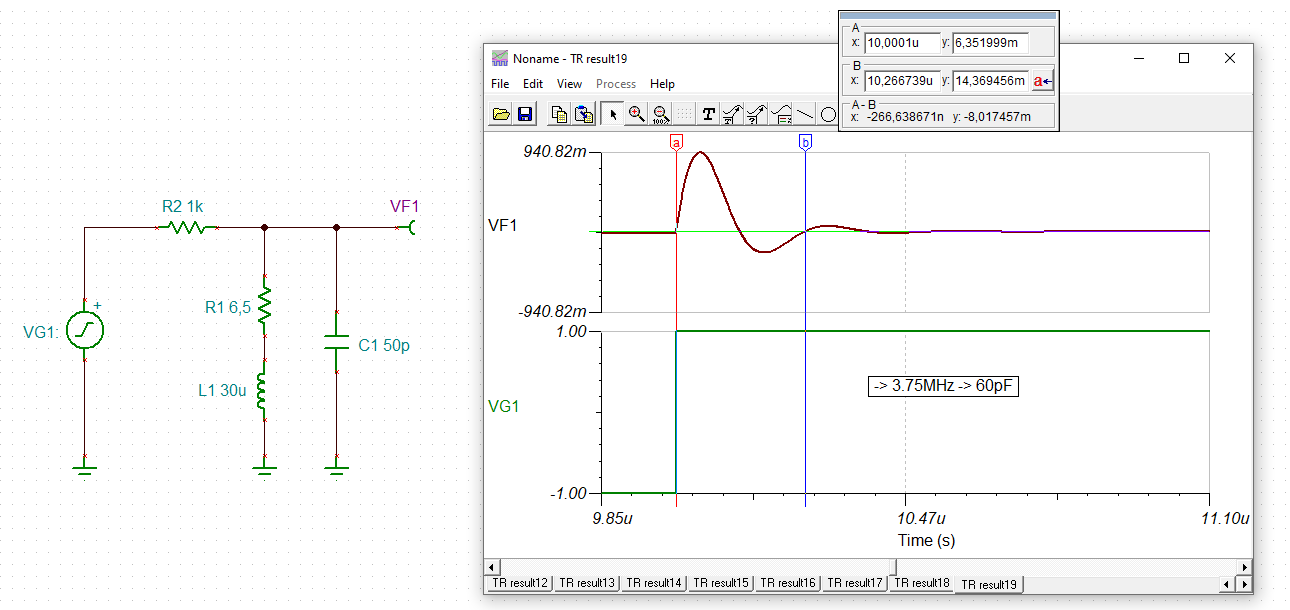Other Parts Discussed in Thread: OPA656, OPA820, TINA-TI, OPA810
I had to replace an OPA in an existing design. Because of output current drive requirements I selected the OPA690. In my application I need to drive a speaker which has a R_DC of 6.5 OHM and a inductance of 30 uH. Due the signal quality/resolution of the signal generator I need to attenuate the signal of the generator. The AC signal at the OPA input ranges from 1 mVpeak to 400 mVpeak, load currents are in the range of ~170 uA to 61 mA. The signal frequencies are from 20 Hz up to 20 kHz. I'm only interested in the AC performance, some DC offset or drift not really matters. The circuit was working fine for the prototype module. For the productive boards I see big differences in the THD performance, I have 10 dB difference between the boards, some working perfect others are not. All my simulations (step response, AC characteristic, THD, SNR, DC) are okay. For the open loop simulation I get some phase results which I don't understand. I have seen that this is because of the 30 uH inductance. If I only use the 6.5 OHM the phase looks as usual for a noninverted OPA setup. I have the following questions:
1. can I operate the OPA690 in general with the given load and the small input signals, specially regarding SNR and THD
2. would it be better to use a inverted OPA configuration
3. would it be better, due the complex load, to use a serial resistor at the output of the OPA
4. can the OPA operated in the inverted configuration with gains < 1, e.g. 0.1
5. any suggestions how to get a correct phase simulation for the open loop simulation with the 30 uH inductance
6. is there any other OPA which could fit better, I searched the TI amplifiers but the problem is the required output current and I need a +/-5V supply. maybe the OPA656
I attached my Tina simulation schematic which I use for the AC,DC,... simulations.
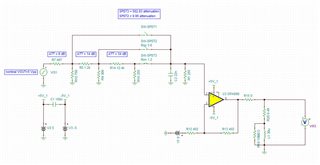
Thank you in advanced, best regards
Jan


